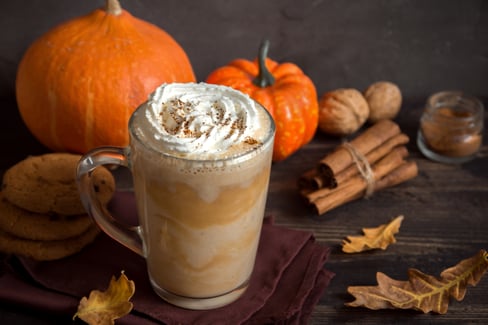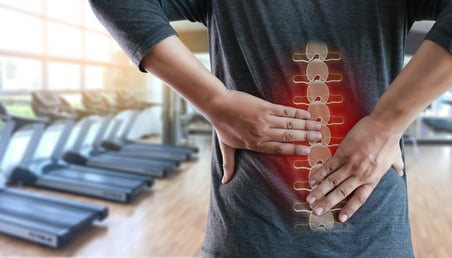 Sometimes you might think you’re doing the right things (or at least not really wrong things) when it comes to healthy eating. But those habitual behaviors might actually cause you to consume more food and calories.
Sometimes you might think you’re doing the right things (or at least not really wrong things) when it comes to healthy eating. But those habitual behaviors might actually cause you to consume more food and calories.
Not-So-Healthy Habit #1: Eating Too Quickly
You might have heard that it takes approximately 20 minutes for your body to send a signal to your brain that it is full. While the exact amount of time likely varies from person to person and the amount of food consumed, it is typically true that satiety doesn’t occur immediately after consuming something. Therefore, if you’re still hungry right after after eating something, you should allow yourself a few minutes to see whether satiety kicks in, or if you truly are still hungry. Additionally, eating too quickly can cause you to swallow air, which may result in GI discomfort such as gas or bloating, and also poses a risk for choking.
THE FIX: To help slow down the rate at which you eat, try taking smaller bites, chewing more slowly and thoroughly, putting your utensil down between bites, including sips of water between bites, and making conversation throughout the meal if eating with others.
Not-So-Healthy Habit #2: Skipping Meals
Overeating can also result from skipping meals or following irregular eating patterns. For example, some individuals may use compensatory thinking after skipping meals, such as, “I didn’t eat anything all day, so it is okay for me to eat whatever I want tonight.” Similarly, skipping meals may lower your inhibitions, making it more likely for you to choose unhealthier food options. Skipping meals can disrupt your metabolism, blood-sugar levels, and mental and physical performance.
THE FIX: To prevent skipping meals, it’s important to establish a regular eating schedule. There is no “one-size-fits-all” perfect eating regimen: three meals a day may suffice for some, while others prefer five or six “mini meals” or snacks. If an irregular appetite is the issue causing you to skip meals, try eating smaller, more frequent meals throughout the day. If you find that time is the problem, plan your meals and snacks in advance (for example, the night before) and keep plenty of portable snacks on hand (such as granola bars, apples, oranges, and trail mix).
Not-So-Healthy Habit #3: Eating While Distracted
Similar to when an individual eats too quickly, eating while distracted may interfere with the body’s ability to signal satiety to the brain, thus increasing the odds of overeating. If you aren’t focusing on what you are eating and how you feel while you are eating, you might not recognize when you’ve had enough.
THE FIX: The next time you’re eating a snack or meal, be sure to sit down in a quiet, comfortable setting and unplug from all distractions such as your cell phone, computer, or TV.
Not-So-Healthy Habit #4: Over-restricting Intake
Over-restricting your intake can also lead to overeating. For many people, the idea of not being able to have something only makes them want it more. The same is true with food. Restricting certain food groups can also restrict certain nutrients that your body needs to function properly. For example, when an individual aims to restrict all carbohydrates, they are also restricting the good components of carbohydrates, such as fiber, vitamins, and minerals.
THE FIX: Instead of banishing the foods you love and depriving yourself of them, try allowing yourself to have them more frequently—just in moderation. For example, if you’re someone who finds yourself swearing to never eat ice cream again at the top of every week, only to find yourself indulging in an entire pint by Friday, try allowing yourself a small bowl or serving of ice cream several times each week to satisfy your cravings.
***
If you’re working on practicing healthy eating, try to be mindful about your eating habits, plan ahead, and give yourself some grace.
This blog was written by Lindsey Recker, MS, Registered Dietitian. To learn more about the NIFS bloggers, click here.


 It’s no secret that our emotions impact what we eat, when we eat, and how much we eat. In fact, sometimes it seems that the strongest cravings hit when our emotional and mental well-being is at its weakest. Emotional eating is a way to, in the short term, relieve or suppress negative feelings, such as sadness, stress, anger/frustration, or boredom. However, emotional eating can also lead people to make poor choices, such as skipping or forgetting meals, consuming fast food frequently, or consuming alcohol or caffeine in excess, all of which may have health consequences, including unintentional weight gain.
It’s no secret that our emotions impact what we eat, when we eat, and how much we eat. In fact, sometimes it seems that the strongest cravings hit when our emotional and mental well-being is at its weakest. Emotional eating is a way to, in the short term, relieve or suppress negative feelings, such as sadness, stress, anger/frustration, or boredom. However, emotional eating can also lead people to make poor choices, such as skipping or forgetting meals, consuming fast food frequently, or consuming alcohol or caffeine in excess, all of which may have health consequences, including unintentional weight gain.  1. Do make a plan to manage your stress level.
1. Do make a plan to manage your stress level. With the phrase “freshman 15” commonly tossed around, many students enter college with a fear or perception that they will gain weight. However, a
With the phrase “freshman 15” commonly tossed around, many students enter college with a fear or perception that they will gain weight. However, a 
 Pumpkin season is officially here, and I am SO excited! Call me “basic”—you would not be wrong. Starbucks has launched their pumpkin drinks. Food bloggers, including myself, are basically turning their kitchens into giant pumpkins. It is a whole thing.
Pumpkin season is officially here, and I am SO excited! Call me “basic”—you would not be wrong. Starbucks has launched their pumpkin drinks. Food bloggers, including myself, are basically turning their kitchens into giant pumpkins. It is a whole thing.  One of the most critical things we do for our health is sleep. Without sufficient sleep, we risk impairing cognitive function, developing chronic diseases and mental disorders, and even an early death.
One of the most critical things we do for our health is sleep. Without sufficient sleep, we risk impairing cognitive function, developing chronic diseases and mental disorders, and even an early death. If you’re trying to lose weight, you’ve probably started exercising, maybe you’re trying a new diet, and maybe you’ve been super consistent for months now, but nothing’s changing. You feel like you’re doing everything right, but you haven’t seen any changes on the scale. How can this be? Weight loss is all about diet and exercise, so why aren’t the pounds just falling off? Research suggests there’s more to weight loss and weight management than diet and exercise alone.
If you’re trying to lose weight, you’ve probably started exercising, maybe you’re trying a new diet, and maybe you’ve been super consistent for months now, but nothing’s changing. You feel like you’re doing everything right, but you haven’t seen any changes on the scale. How can this be? Weight loss is all about diet and exercise, so why aren’t the pounds just falling off? Research suggests there’s more to weight loss and weight management than diet and exercise alone. Start your day off right by nailing breakfast with a healthy, nutrient-rich meal. Breakfast helps kickstart your metabolism and burn more calories throughout the day. Eating breakfast tells your body there are plenty of calories to be had throughout the day. When you skip breakfast, the message is clear: conserve calories rather than burn them. Those who skip breakfast may eat fewer calories but still tend to have higher BMI.
Start your day off right by nailing breakfast with a healthy, nutrient-rich meal. Breakfast helps kickstart your metabolism and burn more calories throughout the day. Eating breakfast tells your body there are plenty of calories to be had throughout the day. When you skip breakfast, the message is clear: conserve calories rather than burn them. Those who skip breakfast may eat fewer calories but still tend to have higher BMI. With millions of people around the world suffering from back pain, is there any hope for relief outside of traditional methods? Low back pain can be excruciating and immobilizing, but there is still hope. When dealing with any pain or injury, exercising might be the last thing that crosses your mind, especially if it’s chronic low back pain (CLBP). However, that’s exactly what is recommended and what can help.
With millions of people around the world suffering from back pain, is there any hope for relief outside of traditional methods? Low back pain can be excruciating and immobilizing, but there is still hope. When dealing with any pain or injury, exercising might be the last thing that crosses your mind, especially if it’s chronic low back pain (CLBP). However, that’s exactly what is recommended and what can help. The holidays technically started on
The holidays technically started on